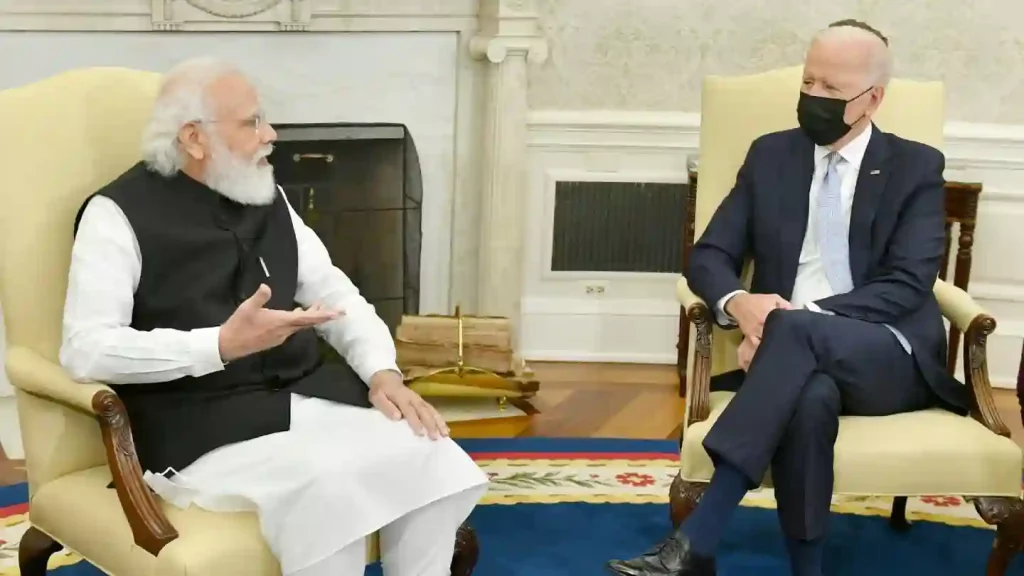Hailing India-US cooperation as ranging from the ‘seas to the stars’, Mr. Modi’s visit to Washington has yielded several agreements for cooperation in technological and strategic sectors
Indian Prime Minister Narendra Modi’s recent visit to Washington may go down in history as a landmark moment for Indo-US economic and technological cooperation, with a plethora of high-profile deals being signed on a range of issues, such as defence, logistics, space exploration, computing hardware and software and human capital.
In their joint statement, US President Joe Biden and Mr. Modi announced a new chapter in their partnership as India gears up to become both a geopolitical swing state and an engine for the global economy. With America intensifying its quest to contain an increasingly belligerent China, India has been leveraging its role as the world’s most populous country, a vibrant democracy, and an English-speaking tech incubator to draw the two countries closer.
Deep cooperation in the sectors of the future
Hailing India-US cooperation as ranging from the ‘seas to the stars’, Mr. Modi’s visit to Washington has yielded several agreements for cooperation in technological and strategic sectors. While the most high-profile announcements were made in the defence sector, such as General Electric’s decision to manufacture its flagship F414 engines in India with technology transfer, and naval maintenance, repair, and logistics agreements, several important agreements were made in other non-defense technological fields as well.
For example, the two countries have announced plans for deep cooperation in the field of space exploration, with India joining the Artemis Accords and a joint mission to the International Space Station on the cards in 2024. Other sweeping deals in the sectors of semiconductors, quantum computing, critical raw materials and minerals, human capital development, and AI have also been signed. US chipmaker Micron Technologies is opening a $2.75 billion semiconductor facility in Gujarat, and Lam Technologies has agreed to train more than 60,000 Indian engineers to accelerate Indian modernisation goals.
“By increasing our cooperation in fields such as artificial intelligence, semiconductors, space, quantum, and telecom, we are creating a strong and futuristic partnership,” Mr Modi said. There is already a deep intertwining between the two countries’ IT sectors, with hundreds of thousands of Indian ex-pats working in Silicon Valley and even leading corporations. Conversely, American capital has helped India become the third-largest startup incubator globally.
A Free Trade Deal is still a while away.
India is expected to be one of the biggest beneficiaries of the new American friend-shoring strategy, which entails the US moving some of its critical manufacturing supply chains out of China and into friendly countries. Coming at a time when boiling Sino-American geopolitical tensions and the COVID-19 pandemic have caused huge supply chain issues, more and more companies are moving their factories out of China and into more reliable countries such as India, Vietnam, and Mexico.
However, a full and comprehensive free trade agreement between the two countries is still proving elusive. While some progress on trade issues has been made, such as a decision by both parties to end six outstanding trade disputes at the World Trade Organisation, and a commitment to expand market access and investment protections, the focus is not on a full FTA yet. India has been traditionally protectionist, and America, too, is entering a new phase of interventionism. This is more of a speed bump than a roadblock, however.
While trade between the two countries has already been booming, standing at $175 billion, it is expected to surge even higher and reach $500-600 billion by 2030. America is India’s largest export destination, and trade has already doubled over the past ten years. As the world economy stumbles and global geopolitical tensions rise, the partnership between India and the United States is expected to grow increasingly important, driving global growth and trade.
